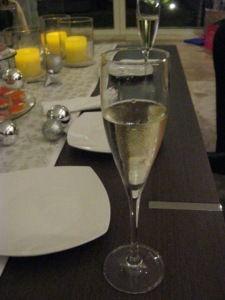-->

Please ‘welcome’ my guest blogger & “a votre santé/cheers”!
Carlo Pandian, is an Italian expat living in London and passionate about wine and gardening. He loves buying Champagnes at his favourite shop in London, Roberson Wine and periodically travels also in France, Spain and Italy for his love of their grapes and foods.
Guiding You Through the World of Champagne
Imagine you are attending a soiree surrounded by people you want to impress either for personal reasons or for career aspirations and the conversation turns to Champagne and Sparkling Wines. Would you be prepared? Would you know what to say? Or would you put your proverbial foot in your mouth? Well, never fear as we have put together a brief guide on the real differences between the so-called sparkling wines and the one and only Champagne. Cheers!
A Question of Direction
The first real difference between these two highly contested alcoholic drinks is where they are produced. Champagne can only be called Champagne if it is produced in the north eastern region of France which is actually called Champagne or in French, la ‘region champenoise.’ It is here that Champagne was first created in 1844 when it was accidentally produced when experimenting and the exploding bottles and flying corks were brought to a quick halt by a man called Jacquesson. He came up with the idea of a muselet to prevent the corks from being jettisoned into the air. First come first served as they say, the term ‘Champagne’ is a legally binding one which first made into the legal books as early as 1891 as being the name given to sparkling wines just produced in this French region and the terms still hold today. So, if somebody at your gala evening hands you a sparkling wine from Australia and they call it Champagne, then you should be able to show off your knowledge. That’ll be one point to you.
A Question of Taste
Champagne can only be made using three grape varieties and these are Chardonnay, Pinot Noir and Pinot Meunier. You will see that some Champagnes, notably Blanc de Blanc and Blanc de Noirs, are only produced using the Chardonnay and Pinot Noir or Pinot Meunier respectively. Other Champagnes use a blend of three grape varietals. So, remember the golden rule of three here, Chardonnay, Pinot Noir and Pinot Meunier. Leave the Merlot’s and Grigio’s for another wine conversation.
A Question of Production
All good products have their very own ‘secret recipes’ and Champagne is no different in this respect, although nowadays, it is not all that secret. The production method used to create the Champagne is called ‘La mèthode champenoise.’ After the first fermentation, a second fermentation takes place by adding several grams of yeast or rock salt. It is then left an average of one and half years to let all the flavours come out. Some Champagnes are said to mature for three years to become the taste people have been accustomed to drinking at swish soirees. The care to detail after these three years is fine tuned even more when the bottles are manually or mechanically turned so that the fermentation settles in the neck of the bottle and not in the main contents.
A Question of Marketing
Look at a Champagne label and you can see the prestige of what you are about to drink. Traditionally, the labels themselves will commemorate a certain event such as in the past, historic battles, legendary monarchs and ideas of romance and love. Today, the same label inspires people to open the bottles for prestigious events such as christenings, job promotions or if you are lucky enough, the launching of your very own boat.
###
A big MERCI to Carlo for his article about my favorite aperitif. See photos here for a food/wine festival, where I visited several champagne vendors there – indeed, golden memories!
WHAT IS YOUR PREFERRED COCKTAIL/APERITIF?
Photo credit: 24/7 in France
-->
No comments:
Post a Comment